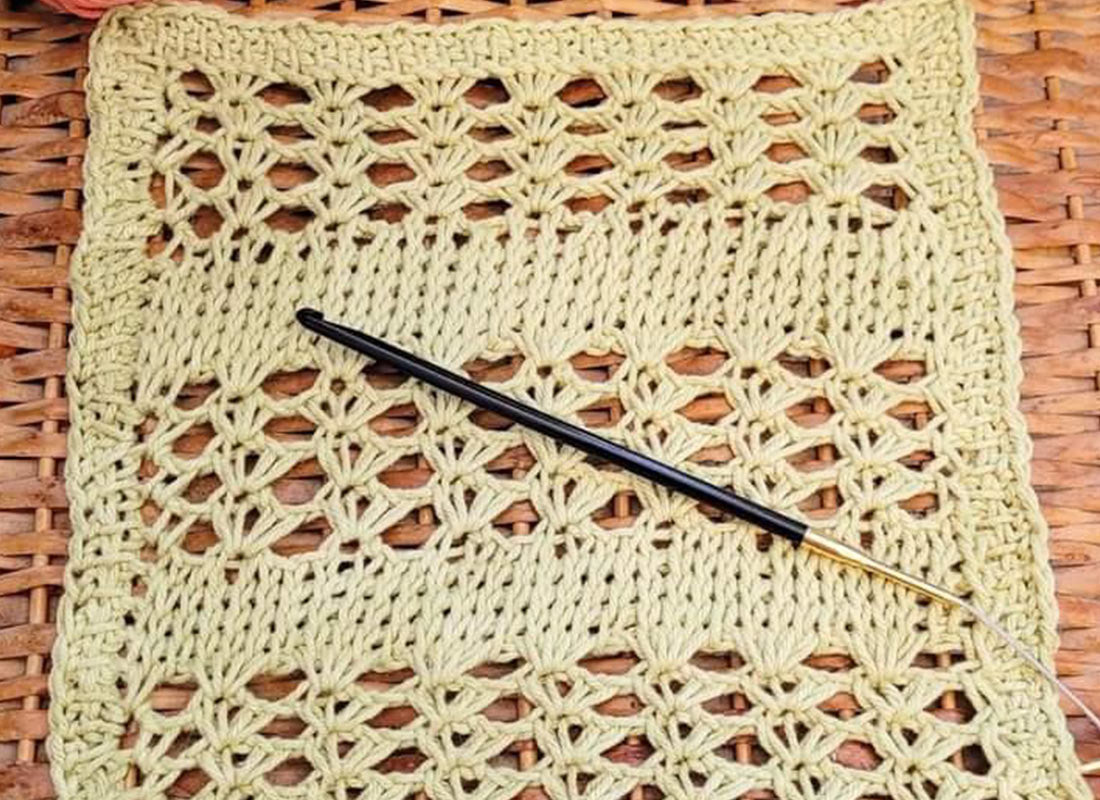
Crocheting is a versatile and creative craft that allows individuals to create beautiful and functional items using colorful yarns and crochet hooks from your craft collection. The crochet chain is a fundamental stitch that is used as the foundation for crochet projects. It is used also for the purpose of adding height to a particular stitch, making lace patterns or buttonholes and in stitch combinations such as shells, filets, pineapple and other intricate patterns. Whether you're a beginner or have some basic crochet skills, learning how to start a crochet chain is essential. In this blog post, we will guide you through the step-by-step process of working a crochet chain, providing valuable tips and tricks.
Gathering the Basic and Important Tools
Before diving into the crochet chain, it's essential to gather the necessary tools. You will need a ball or skein of yarn of any color you love and a crochet hook, available in various sizes according to the yarn (letter or mm on the hook). You can choose single-ended crochet hooks or work with an interchangeable Tunisian crochet hook without attaching the cord. Both are beginner-friendly and work for all kinds of projects.
Choose a hook that is appropriate for your chosen yarn weight. Thinner yarns typically require smaller hooks, while thicker yarns require larger hooks. Select a yarn color and texture that you find appealing and suitable for your project. Once you have these tools, you're ready to start your crochet chain.
Position of the Crochet Hook: Hold the crochet hook as if you were holding a pencil or a pen. This grip allows better control and movement during crocheting. You can adjust your grip as you become more comfortable with crocheting. Make sure you hold the hook loosely, allowing it to move freely in your hand. A tight grip may lead to hand fatigue and tension.
Making a Slip Knot: To start your crochet chain, you'll need to create a slip knot. Begin by making a loop with the yarn, ensuring that the short end of the yarn is on top. Insert your crochet hook through the loop, catching the yarn with the hook. Now pull the tail end of the yarn to tighten the loop around the hook. Now you have a slip knot ready. This is the first step to begin your crochet chain. In most crochet patterns, the slip knot is not counted as the first chain stitch. Also, the loop on the crochet hook is also not counted when a pattern design talks about chain stitches.
Holding the Slip Knot: Hold the knot between your thumb and the middle finger of your non-dominant hand. Keep the tail end of the yarn secured by holding it against your palm with your ring finger and little finger. This will provide stability and prevent the knot from unraveling as you start your crochet chain.
Yarning Over: Now it's time to yarn over, which means wrapping the yarn around the hook. Hold the hook with your dominant hand, ensuring the slip knot is secure. With the yarn attached to the skein, bring it over the hook from bottom to top like it is at the back, and you bring it over to the front of your hook. The yarn should now be draped over the top of the crochet hook, ready for the next step. Our beginner’s guide to crochet yarn over will guide you through the steps and help with the neat basic technique of crochet.
Pulling Through: When you bring the yarn over the hook, use your dominant (usually the right) hand to pull the wrapped yarn through the slip knot. This action is referred to as "pulling through." You will have one loop on your crochet hook after completing this step. Congratulations! You've made your first chain stitch. Repeat steps 5 and 6 to create additional chain stitches, forming your crochet chain. You can make the foundation chain bigger by increasing the number of loops by simply yarn over and pull through the loop. The size of your foundation chain always depends upon the project you are making.
Tips for Crocheting the Perfect Starting Chain
A perfect crochet chain is a start to neat crochet projects. Go through these 5 tips that assist with neat crochet chain stitches.
- Try to make each chain the same size. This can be learned with the practice of yarn tension and controlling the movement of your crochet hook.
- Use a crochet hook size larger than mentioned in the pattern for the chain stitch. The smallest of basic crochet stitches, it makes the tightest of the crocheted fabric therefore a bigger size will help you make neat stitches.
- Keep in mind to not let the starting chain twist when working the first row. Tug at the yarn at frequent intervals to keep stretchiness to the stitches.
- Keep a count of the chains and the stitches you are working on. Working a stitch in a chain will cause the loops to stretch a bit while the next loops shrink a little changing the appearance of the stitches.
- If you have a mistake in the first row of the crochet project after the chain stitches, rip out the stitches and also the chain. The chain becomes frumpy looking when you rip out a row.
Once you’ve mastered the beautiful crochet chain, you’ll have a fabulous-looking edge and have skills to make more advanced crochet stitches. Remember to start with the right tools, hold the hook correctly, and follow the step-by-step process of creating a slip knot, yarning over, and pulling through. With practice and patience, you'll soon be able to create complex and beautiful crochet projects using the basic techniques and the right tools. The foundation of your project matters. It is the thing on which the whole piece and the design depend. Pay attention to creating a sound foundation whenever you think of creating a new masterpiece. A quick glance at the 5 common crochet mistakes and how to avoid them will guide you smoothly on your crocheting journey.
For all your crafting needs, explore the premium knitting needles and crochet hooks from Lantern Moon. The handcrafted collection of smooth ebony wood tools and accessories is created by skilled artisans who’ve been practicing centuries of the culture of beautiful handiwork. Each of the beautiful tools and accessories have a liquid silk-finish that allows a smooth flow of stitches.
